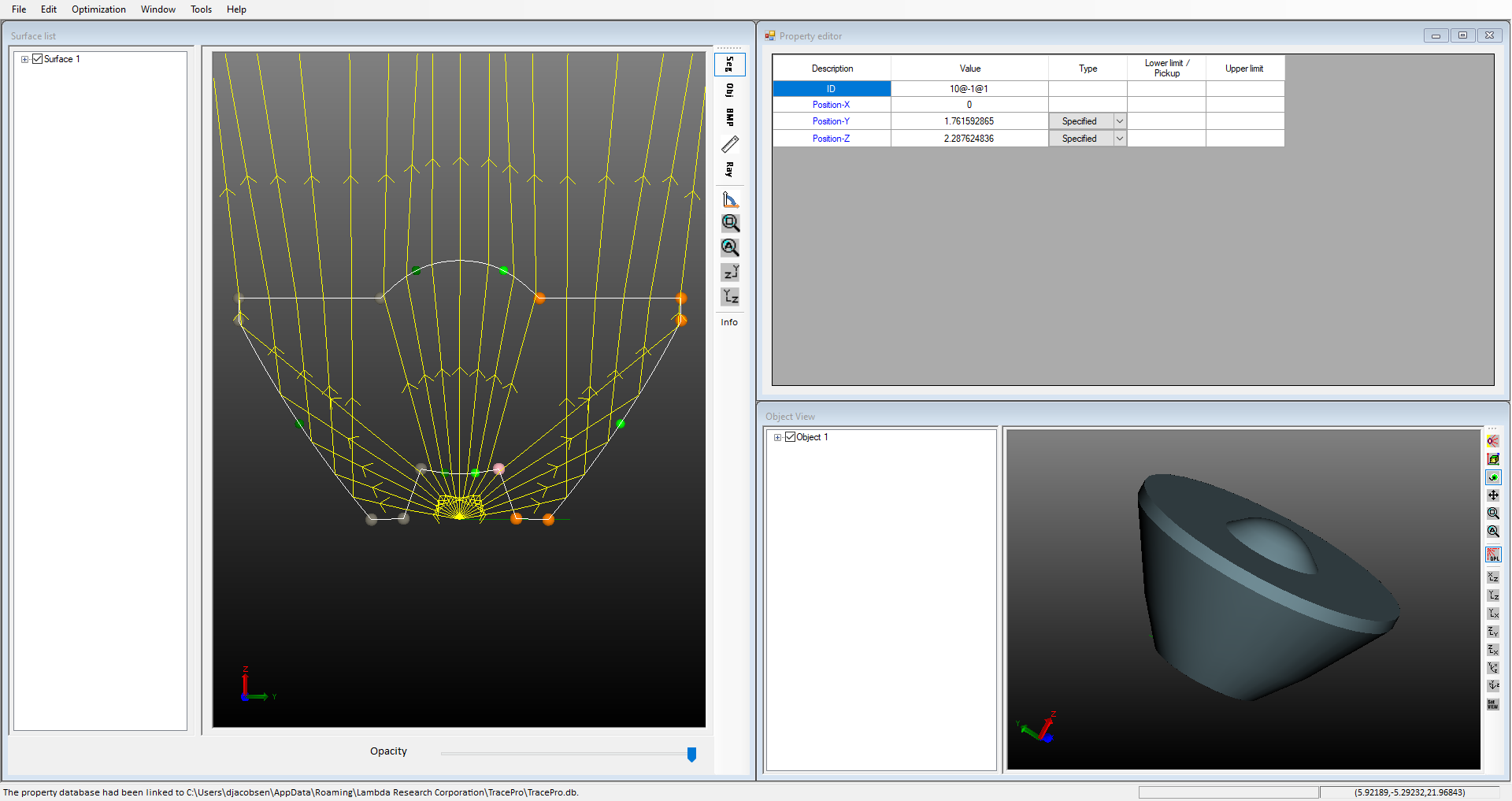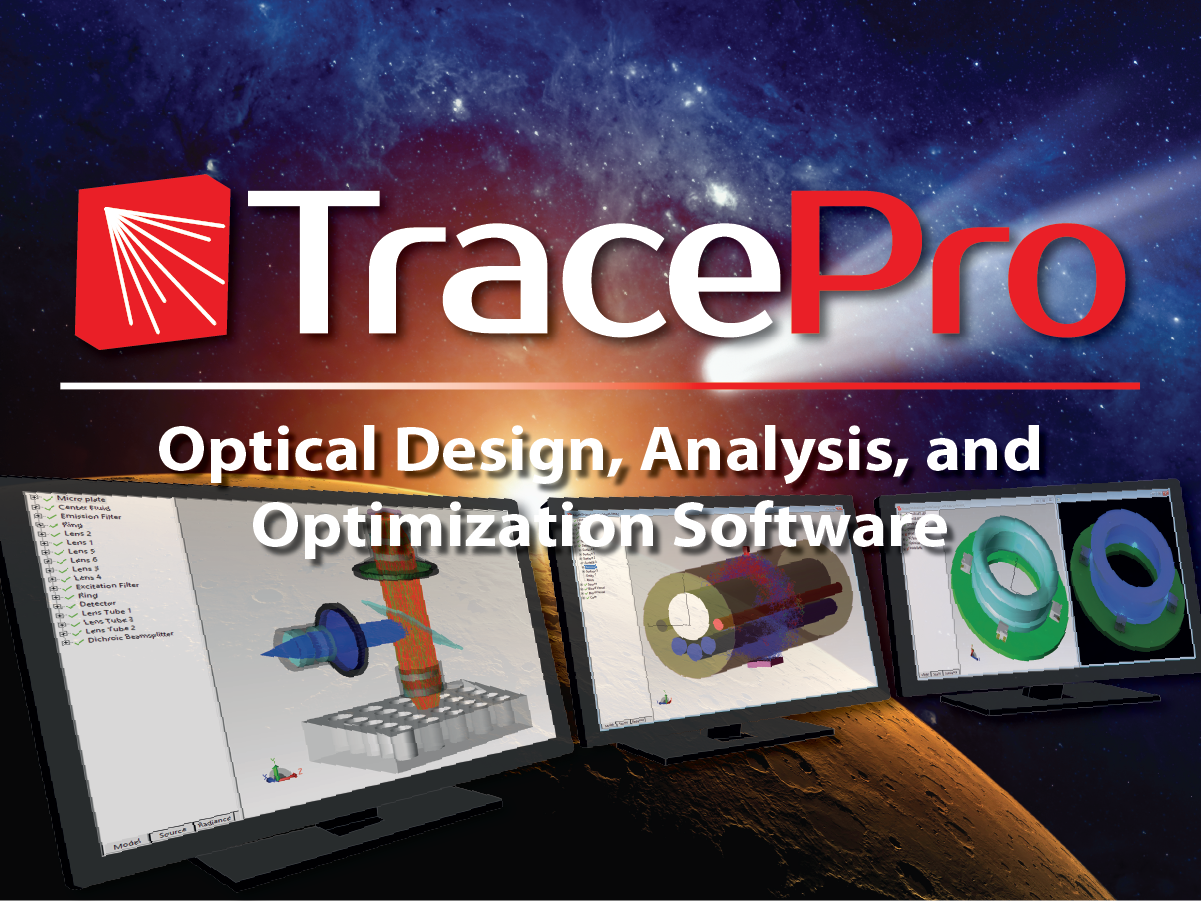Comprehensive Stray Light Analysis with TracePro
Stray light in optical systems can significantly reduce performance, leading to reduced image quality, unwanted noise, and inaccurate measurements. Controlling and analysing stray light is essential for a wide range of optical applications. TracePro is a versatile and powerful tool extensively used for stray light analysis, helping engineers and designers suppress and mitigate unwanted light. Its advanced capabilities allow users to accurately simulate and address stray light issues in complex optical systems.
Effective Baffle Design for Stray Light Suppression
Baffles play a critical role in minimising stray light in optical systems by preventing unwanted light from entering the system and interfering with the intended optical path. TracePro's advanced design tools make it easy to create effective baffle designs for stray light suppression. Engineers can simulate how different baffle configurations will block or reflect stray light, allowing them to optimise the design for maximum performance. This results in optical systems that maintain high signal-to-noise ratios and produce clearer, more accurate results.
By modelling the light path, TracePro helps users determine the optimal placement and shape of baffles, whether for telescopes, cameras, or other optical instruments. This ensures that stray light is minimised, improving the overall quality of the optical system.

Detailed Stray Light Analysis
TracePro goes beyond basic stray light suppression by offering detailed analysis of the causes and effects of stray light in a variety of optical systems. For example, the software can analyse stray light due to scattering, aperture diffraction, and ghost images. These phenomena often arise in complex optical systems, leading to degraded performance and unwanted optical artefacts. With TracePro, users can model and simulate these effects, allowing them to identify potential issues early in the design process.
The software also provides tools for analysing self-emission in infrared and longer wavelength systems. This is particularly important in systems that operate in the infrared spectrum, where the optical components themselves may emit unwanted light due to their temperature. By simulating these emissions, TracePro enables designers to account for them and ensure that they do not interfere with the performance of the optical system.
Polarization and Spectral System Simulations
Polarization effects, such as birefringence, can also impact the performance of optical systems. Birefringence occurs when a material causes light to split into two polarised beams, which can lead to unwanted interference. TracePro offers sophisticated tools for simulating these polarization effects, enabling users to understand how birefringence will affect their system and take steps to minimise its impact.
In addition to polarization, TracePro excels at simulating spectrometers and other multi-spectral systems. These systems are used in a wide range of applications, from scientific research to industrial inspection, and rely on accurate light measurements across multiple wavelengths. TracePro's ability to simulate the behaviour of light at different wavelengths allows engineers to optimise these systems for performance, ensuring accurate results regardless of the spectral range.

Addressing Thermal and Narcissus Effects
Thermal effects can have a significant impact on the performance of optical systems, especially those operating at infrared and longer wavelengths. TracePro provides tools for modelling thermal loading and its effects on optical components. This enables designers to simulate how heat will affect their system's performance, allowing them to develop strategies for mitigating thermal interference.
Another key issue that TracePro helps address is the Narcissus effect, a phenomenon in infrared systems where the detector sees its own reflection, leading to spurious signals. By simulating how light interacts with the detector and surrounding components, TracePro can predict and reduce the impact of this effect, ensuring more accurate infrared measurements.
Diffraction Gratings and Wavelength Versatility
Optical systems that rely on diffraction gratings can also benefit from TracePro's simulation capabilities. Diffraction gratings are used to separate light into its component wavelengths, and any stray light can interfere with the precision of this process. TracePro allows users to simulate how light interacts with diffraction gratings, helping them identify and mitigate sources of stray light that may degrade the system's performance.
Thanks to its generality, TracePro can simulate optical systems operating across a wide range of wavelengths. This includes everything from the extreme ultraviolet to the visible spectrum and beyond, into the infrared and millimetre wavelengths. This versatility makes it an ideal tool for designers working with complex optical systems that require precise performance across multiple spectral ranges.
Easy Setup and Accurate CAD Integration
One of the key advantages of TracePro is its intuitive user interface, which allows for quick setup and seamless integration with CAD files. Engineers can easily import CAD models of their optical systems, reducing the time required for stray light analysis. The software's user-friendly interface makes it easy to define light sources, optical elements, and environmental factors, enabling users to quickly perform complex analyses with minimal setup time.
By offering an efficient workflow, TracePro allows users to focus on refining their designs and improving system performance without getting bogged down by lengthy setup procedures.
For more information on how TracePro can enhance your optical design projects, explore our product information or contact our support team for assistance.
Other Tracepro Applications
Aerospace & Defense
Aerospace & Defense solutions for analyzing, simulating, and optimizing advanced systems
Automotive
Automotive solutions for analyzing, simulating, and optimizing vehicle systems
Lighting
Lighting design for analyzing, simulating, and optimizing illumination systems
